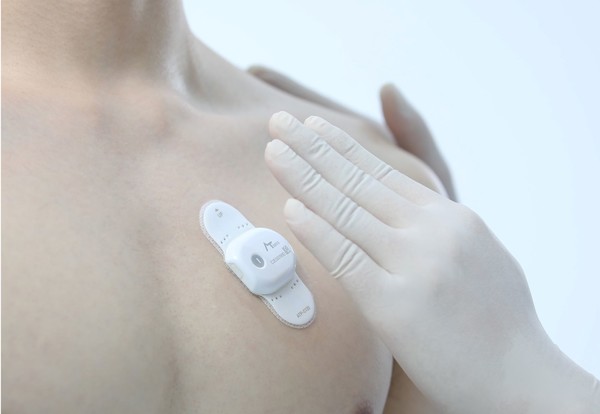“Testing for irregular heart rhythm is the first step for identifying heart disease. The confirmation of arrhythmia is possible only by an electrocardiogram (ECG) test and a specialist’s review of the patient’s symptoms. As the patient’s feeling of symptoms is subjective, their awareness of symptoms varies greatly. So, we need an ECG test that can objectively examine the heart rhythm.”
Yoon Chang-hwan, an internal medicine professor at the Seoul National University Bundang Hospital (SNUBH), made these and other points in an interview with Korea Biomedical Review.

He emphasized the importance of the ECG test in diagnosing an arrhythmia.
Arrhythmia refers to irregular heartbeats that are too fast, or too slow, or beating intermittently irregularly. The disease can cause other complications, or another heart disease could cause arrhythmia. So, it is important to detect and manage the disease early through ECG testing.
One-third of patients with atrial fibrillation (AF), one of the representative arrhythmic diseases, do not recognize any symptoms. As a result, it is difficult to secure an opportunity for diagnosis and preventive treatment, leading to serious complications such as stroke.
To diagnoses AF, it is essential to run an ECG test, the basic examination to identify a heart-related disease.
However, symptoms of arrhythmia appear irregularly. Therefore, unless a person takes an ECG test at the moment of irregular heartbeats, it is difficult to diagnose the disease.
This is why the existing ECG test, which takes from 10 seconds (the standard 12-lead ECG) to 24 hours (holder monitoring), has limitations to screen arrhythmia.
Last year, however, wearable ECG devices supplementing the shortcomings of the existing ECG testers drew much attention because they enabled long-term continuous ECG.
ATsens’ AT-Patch and Deulimteg’s Cardea SOLO are representative long-term continuous ECG monitors.
AT-Patch can monitor the ECG signal for 11 days consecutively, which is the longest among ECG monitors in Korea. It is a patch-type device attachable to the chest, allowing the user to get ECG testing in daily life.
Arrhythmia incidence 28.7% in 24 hours, 96% in 10 days
In the U.S. and Europe, long-term continuous ECG monitoring is already common. In the U.S., it was commercialized in 2011, and it accounts for about 30 percent of the continuous Holter monitor market. This is because the clinical usefulness of the long-term continuous ECG has already been proved.
According to a U.S. clinical trial of Zio patch, a long-term continuous ECG detector, 28.7 percent of 16,000 patients who had symptomatic arrhythmia found during 14 days of continuous testing had their first arrhythmia within 24 hours, whereas 96 percent of them discovered the first arrhythmia within 10 days.
It has been over a year since long-term continuous ECG testing devices arrived on the market in Korea.
However, doctors do not use them commonly because the government has not set the reimbursement rate for long-term continuous ECG detection.
Analyzing long-term continuous ECG data takes much more time and work, as the volume of data increases in proportion to the increased testing time. This raises the workload on the doctor and the clinical pathologist inevitably.
For long-term continuous ECG to be used in daily life, developers have to make it small and waterproof. So, the reimbursement rate for a disposable device with an integrated electrode and battery can differ from that for the conventional Holter monitor. Therefore, the nation needs a new reimbursement rate for long-term continuous ECG, Yoon said.
Although the long-term continuous ECG introduction will raise health insurance costs in the short term, it could prevent fatal complications that cause astronomical medical costs and lower the healthcare cost per capita, he said.
“The government may find it difficult to judge because related data has not been accumulated sufficiently. But we can introduce it through selective reimbursement or non-reimbursement and see where it goes,” Yoon said.
“The government has to quickly decide on the reimbursement rate for long-term continuous ECG tests at the realistic level.”

